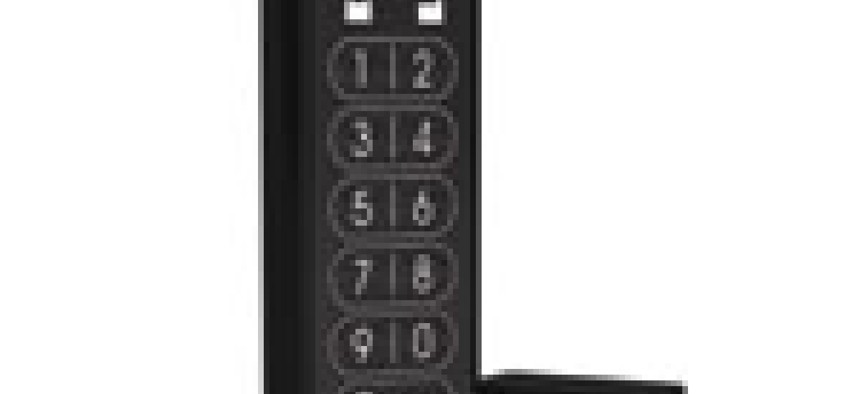At last, a key drive the government can love


Connecting state and local government leaders
The LOK-IT drive is the only one on the market that has both hardware authentication and FIPS 140-2 Level 3 certification.
Back in April, I wrote in a GCN Lab Impressions column saying that, in order for government agencies to get on the “flash drives are OK” bandwagon, improvements would have to be made in several areas. Essentially, I thought the software authentication that allows access to encrypted data needed to be shored up, and the drives needed more protection from physical tampering.
I guess someone must have been listening because the folks at Systematic Development Group have come out with a key drive that addresses every point in my column. The LOK-IT SDG003FM-4GB is a secure USB flash drive that just might have overcome all the hurdles to government acceptance. It won me over and nailed every concern I had with flash drives into the ground.
The LOK-IT drive we reviewed had 4G of space and used the expected 256-bit Advanced Encryption Standard to protect it. It featured a green and a red LED to indicate the drive’s various states of accessibility and activity. What differentiated the LOK-IT from other thumb drives we have tested was the presence of 11 tiny buttons along one side — zero through nine and an enter button with the image of a key on it (the “key” button).

Pros: FIPS 140-2 Level 3 certification for hardware authentication.
Cons: None noted.
Performance: A
Ease of use: A
Features: A-
Value: A-
Price: $96.95 ($72.71 government)
Related coverage:
'Secure' flash drives need to take it to the next level
Those were only hints of how different the LOK-IT is compared to other so-called secure flash drives. We were pleased to find that the authentication for LOK-IT was entirely hardware-based, so there is no middleware to hack. To enter our seven- to 15-digit PIN, we held down the key button until both LEDs turned on, entered the number, then pressed the key button again. If we entered the correct PIN, the green LED would blink and we would have 30 seconds to connect to a device via a USB port (in our case, a desktop computer) before the LOK-IT would, well, lock it back up. Once connected, the green LED stayed on, and the LED next to the key button lit up to indicate drive activity.
From that point, we could access the device the way we would access any other drive on the computer. If we had not unlocked it with the PIN, the LOK-IT would have been treated as an unidentified USB device and never would have made it to the drive list.
The hardware authentication is an improvement over its software-based counterpart in several ways. First, it eliminates the inherent weaknesses that software authentication introduces. For instance, a hacker could insert some malware into authentication software that would keep a record of keystrokes made, which the hacker could review to figure out a user’s password. That tactic, called keylogging, is not easy to pull off because the hacker would also need access to either the drive or a computer to which it connects. But that means that, even with software authentication, a drive that has left the user’s sight for an extended period is potentially suspect. Not so with the hardware authentication found on the LOK-IT.
Platform independence
Second, not using software for authentication makes the drive more platform-independent. You don’t need to worry about whether the authentication software will run on the computer you are connecting to. With the LOK-IT drive’s hardware authentication, we were even able to use it with devices that don’t generally have a standard operating system or even a keyboard or display, such as printers and digital cameras. That flexibility would not be possible with other secure key drives.
Of course, if hackers can’t exploit software in the authentication process, they would have to physically break into the drive. That is why resistance to physical tampering is essential in a secure flash drive. We were especially excited to note that the LOK-IT is certified under Federal Information Processing Standard 140-2 Level 3, which covers exactly that. Systematic Development Group claims that LOK-IT is the only drive to have both hardware authentication and FIPS 140-2 Level 3 certification, and as far as have been able to tell, they are correct.
The LOK-IT will lock a user out after 10 failed password attempts in a row, at which point any data on the drive becomes permanently inaccessible. At this point, someone could set a new PIN, but that would use a whole new authentication key, and the drive would have to be reformatted. There is no way to reset the password without first failing 10 times and being locked out, so a forgotten PIN would mean starting over. But it is preferable to having less secure data.
Systematic Development Group has set the price of the LOK-IT SDG003FM-4GB at $96.95, which is only slightly more expensive than other drives with FIPS 140-2 Level 3 certification (but only software authentication). Keeping that in mind, the government price of $72.71 seems like a pretty good one to us.
Here’s hoping that devices like the LOK-IT will alleviate government organizations’ trepidations about flash drives.
Systematic Development Group, www.lok-it.net




